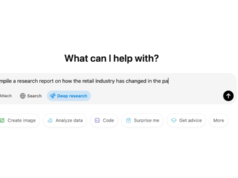At its Baidu World conference in Beijing, Baidu announced it has open-sourced its PaddlePaddle deep learning technology.
Baidu, the provider of the leading search engine in China, has open-sourced PaddlePaddle—the company’s deep learning software platform.
Beijing-based Baidu has set up shop in Silicon Valley in Sunnyvale, Calif., where the company is acting like its born-on-the-web neighbors and open-sourcing core technology to share with the community. PaddlePaddle is now on GitHub with full documentation and specifications.
“PaddlePaddle opens up technology widely used by Baidu to programmers looking for easy-to-learn and easy-to-use tools to build their own deep learning applications,” said Andrew Ng, chief scientist at Baidu.
The company announced the open-sourcing of PaddlePaddle at its Baidu World conference in Beijing. Initially built for Baidu’s own engineers, PaddlePaddle is an interface for data handling and specifying model structure for developers to apply deep learning and cognitive computing technology to their applications. Baidu has used it to add cognitive elements to a variety of products, including its advertising, search ranking, large-scale image classification, optical character recognition and machine translation solutions.
“With this platform, designing a deep learning model is like writing pseudocode,” said Xu Wei, a Baidu distinguished scientist and leader of PaddlePaddle development, in a statement. “Engineers can focus on the high-level structure of their model without worrying about the low-level details. We expect it to be useful to programmers who want to quickly apply deep learning models to problems in areas that can really benefit from AI, such as health care and finance.”
Indeed, Pieter Abbeel, associate professor at the University of California Berkeley’s Department of Electrical Engineering and Computer Sciences and a research scientist at OpenAI, noted, “Progress in AI is critically dependent on time spent in software development to prototype and test new ideas. Sharing software development frameworks—like Baidu is doing with its platform—is key to accelerating progress for the entire community.”
PaddlePaddle supports neural network architectures such as convolutional neural networks (CNNs) and recurrent neural networks (RNNs). It also supports Basic Linear Algebra Subprograms (BLAS) libraries such as Intel MKL, ATLAS, OpenBLAS and cuBLAS. And it can scale to large numbers of GPUs or CPUs on multiple machines, Baidu said.
“Other deep learning platforms have been a great boon to researchers wanting to invent new deep learning algorithms, but their high degree of flexibility limits their ease of use,” Ng said. “In contrast, PaddlePaddle focuses on making it easy for enthusiasts and programmers—not just machine learning researchers—to learn and use powerful deep learning tools.”
Machine learning is one of a number of technologies being adapted to help make sense of all this new data being generated. Machine learning is a field of computer science involving creating and continuously improving algorithms that automatically analyze data to identify patterns or predict outcomes.
Indeed, machine learning is the study of computer algorithms that provide computer programs with the ability to learn, discover, predict and improve automatically using large amounts of data without explicit programming.
Also at Baidu World, Baidu announced it is working with chip maker Nvidia on a self-driving artificial intelligence solution.
Baidu’s CEO Robin Li teamed up with Jen-Hsun Huang to announce the partnership to use AI to create a cloud-to-car autonomous car platform for local Chinese and global car makers.
The partnership combines Baidu’s cloud platform and mapping technology with Nvidia’s self-driving computing platform to develop solutions for HD maps, Level 3 autonomous vehicle control and automated parking, said Danny Shapiro, senior director of automotive at Nvidia, in a blog post.
“We’re going to bring together the technical capabilities and the expertise in AI and the scale of two world-class AI companies to build the self-driving car architecture from end-to-end, from top-to-bottom, from the cloud to the car,” Huang said.
Shapiro said Nvidia and Baidu have a long history of collaboration on AI technology and the companies hope to use AI for the good of society.
“We can start applying these capabilities to solve the grand challenges of AI, one of which is intelligent machines,” Huang said. “One of the intelligent machines we would like to build in the future is the self-driving car.”
However, developing a fully autonomous car is an end-to-end systems problem—from the in-car supercomputer to AI algorithms to an always-updated 3D map in the cloud, he noted. The goal is to make all driving safer—autonomous or not—reducing the number of traffic fatalities and making transportation accessible to everyone, he said.
At Baidu World, Nvidia demonstrated its DRIVE PX 2, an in-car AI supercomputer development platform, and its DriveWorks software to showcase what goes on inside the brain of the autonomous car, Shapiro said.
Meanwhile, also like its Silicon Valley neighbors such as Google, Baidu announced it has been awarded an autonomous vehicle testing permit by the California Department of Motor Vehicles, allowing the company to test its autonomous driving technologies in the state.
“We will start testing our autonomous driving technologies on public roads very soon in California,” said Jing Wang, senior vice president of Baidu and general manager of Baidu’s Autonomous Driving Unit, in a statement. “Baidu has already built a strong team in Silicon Valley to develop autonomous driving technologies, and being able to do road tests will greatly accelerate our progress.”
The company also is testing autonomous vehicles in China.







